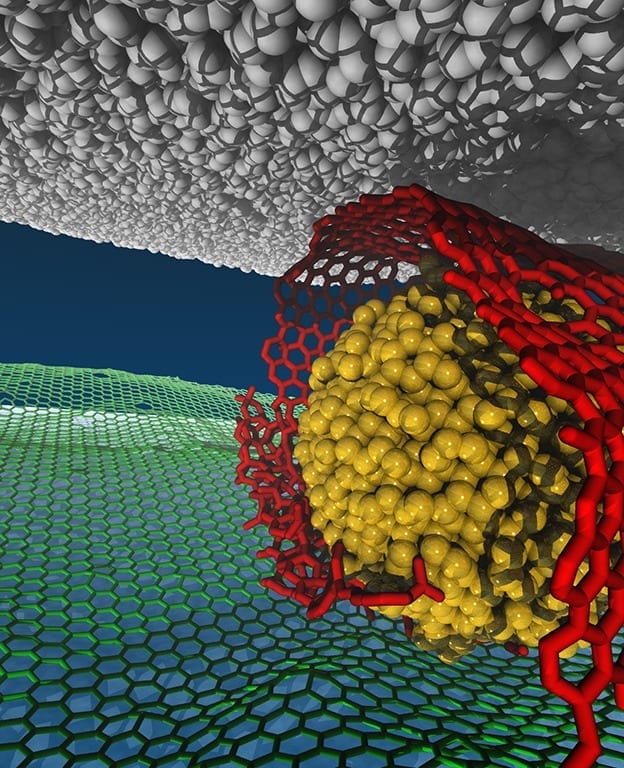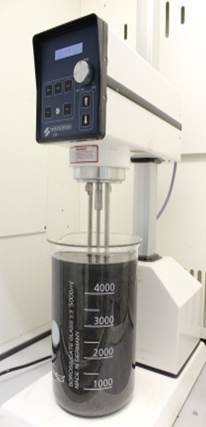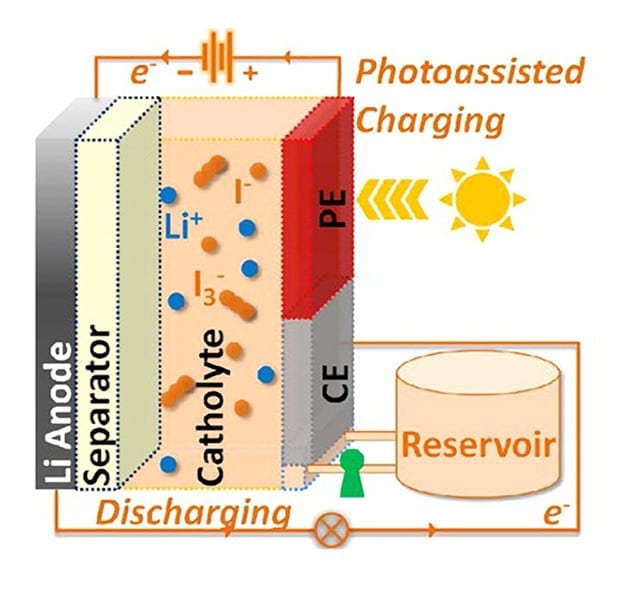
Researchers have attained superlubricity, the near absence of friction, at a carbon-silica interface using nanodiamonds wrapped in graphene flakes.
The Science
Friction hampers the movement of all mechanical parts from engines, motors, etc. in transportation, oil refineries, power plants, and other facilities. At the Center for Nanoscale Materials, scientists built a system with virtually no friction. The system wraps graphene flakes around nanodiamonds that then roll between a diamond-like carbon-surface and graphene on silica. Such hard ball bearings wrapped in slippery Teflon tissue paper rolling between two surfaces reduces the friction to almost zero.
The Impact
The new system reduces contact areas and thus reduces friction to near zero. Creating a low-friction situation has the potential for substantial cost savings because friction accounts for most of the energy lost in moving mechanical assemblies and wear accelerates mechanical failures.
Summary
Superlubricity is the state in which the friction between two sliding surfaces is reduced to nearly zero. Friction and wear are the primary modes of mechanical energy dissipation in moving assemblies, thus it is highly desirable to minimize friction in real-world engineering-based applications. Structural defect issues, however, have stymied the realization of superlubricity. Previous studies have shown the beneficial effect of using graphene to reduce friction. A new study demonstrates that superlubricity can be achieved at the macroscale in a dry environment by the addition of nanodiamonds and graphene flakes .between two surfaces, one made of silicon and one made of diamond-like carbon. In this system, the coefficient of friction is just 0.004, and contact areas are reduced by more than 65%. Analysis of the wear debris revealed that the graphene flakes form nanoscroll-like features wrapping the nanodiamonds. Computer simulations show that more and more graphene flakes scroll with time, gradually reducing the contact area between the nanoscrolls and the diamond-like carbon surface, which allows superlubricity to be attained.
Read more: Near Zero Friction from Nanoscale Lubricants
The Latest on: Nanoscale lubricants
[google_news title=”” keyword=”Nanoscale lubricants” num_posts=”10″ blurb_length=”0″ show_thumb=”left”]
via Google News
The Latest on: Nanoscale lubricants
- Feed has no items.
via Bing News










